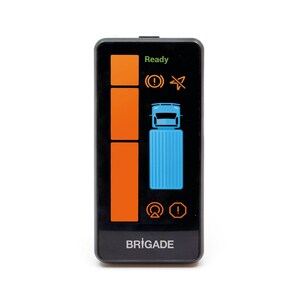Brigade Electronics - Tackling Safety in the Waste Industry
PORTLAND, Indiana, December 18, 2018 /PRNewswire/ --
Accidents in the waste and recycling sector are a continuing problem, but the latest technology can help to reduce the number of incidents
Accidents in the waste and recycling industry are commonplace around the world. Poor weather, congestion, contact with pedestrians and other road users, and poorly-parked cars are just some of the reasons behind the high number of incidents within the industry.
(Photo: https://mma.prnewswire.com/media/799305/Brigade_safety_waste.jpg )
Types of problems
Incidents and problems in the waste industry can include:
- Damage to parked vehicles
- Backup accidents due to blind spots
- Collisions with people and objects
- Complaints about noisy backup alarms
- People falling or being dragged into the hopper
Fatalities and injuries
One major cause for concern is the number of injuries and fatalities among workers at recycling and waste sites where heavy vehicles and machinery are constantly in operation. The waste industry has been ranked the fifth most dangerous occupation in the United States in terms of injuries and deaths, with 25 fatalities for every 100,000 workers. Data issued by the Bureau of Labor Statistics suggested that waste collectors were more likely to die on the job than police patrol officers.
The figures are similar across the world. In the UK, the waste industry is the most dangerous occupation with a fatal injury rate 15 times greater than the average across all industries. EU statistics paint a similar picture.
These statistics exclude the number of injuries and fatalities involving members of the public, where collisions on public roads remain a huge concern.
Safety equipment - what's available?
Health and safety executives are increasingly encouraging waste management vehicle operators to invest in safety equipment to help reduce the number of incidents both among their workforces and among members of the public.
Even larger mirrors cannot completely eliminate blind spots, but camera systems can. Safety technology can give drivers of waste collection vehicles better visibility as they maneuver their trucks. Brigade Electronics' Backeye®360 is an intelligent camera monitor system designed to assist low-speed maneuvering by providing the driver with a complete surround view of the vehicle in real time and in a single image.
The system combines images from ultra wide-angle cameras, resulting in a 'bird's-eye view' of the vehicle and surrounding area. Research has shown that in the time it takes to scan four mirrors, assess and then react to hazards, a vehicle could travel as far as 33 feet. Backeye®360 protects not only the driver but any road user or pedestrian in the vicinity of the vehicle.
Another invaluable safety system is radar obstacle detection, which is also designed to protect people and objects in blind spots. Radar detection works by providing in-cab audible and visual warnings and works effectively even in harsh weather. Brigade's Backsense is programmable with a bespoke detection range of up to 95 feet in length and 30 feet in width.
Simple back-up alarms are fitted as standard on most waste collection trucks, but old-fashioned tonal alarms may be adding to the problem. Research suggests pedestrians and workers often cannot locate the direction from which the alarm is originating. Brigade's bbs-tek® multi-frequency alarms create a 'ssh-ssh' sound which is gentle on the ear and dissipates quickly, meaning the alarm can only be heard in the danger zone.
Brigade Electronics has been developing safety products for more than 40 years and now pioneers products and develops new technology for commercial vehicles and machinery - www.brigade-electronics.com.
SOURCE Brigade Electronics
WANT YOUR COMPANY'S NEWS FEATURED ON PRNEWSWIRE.COM?
Newsrooms &
Influencers
Digital Media
Outlets
Journalists
Opted In






Share this article